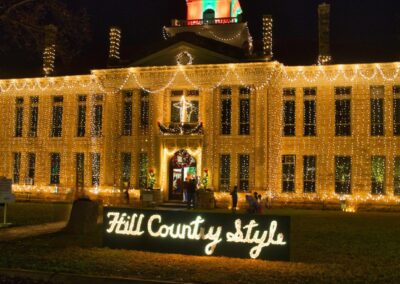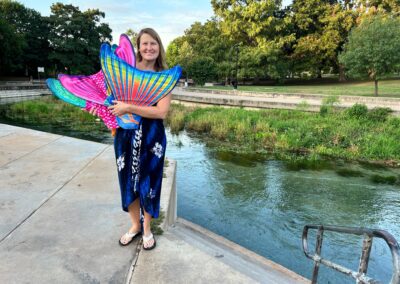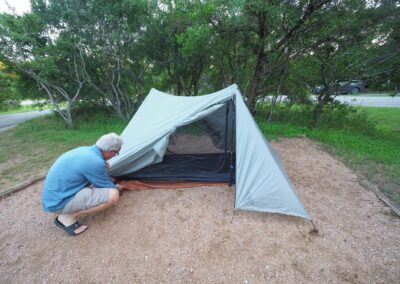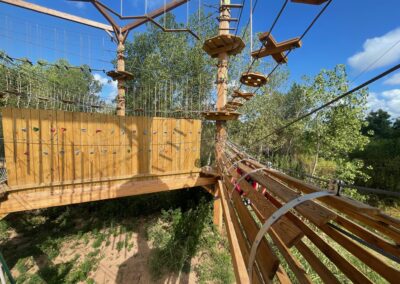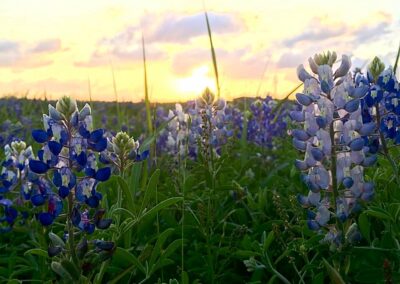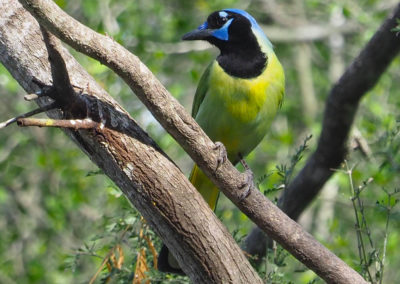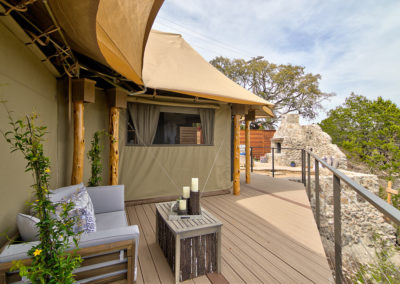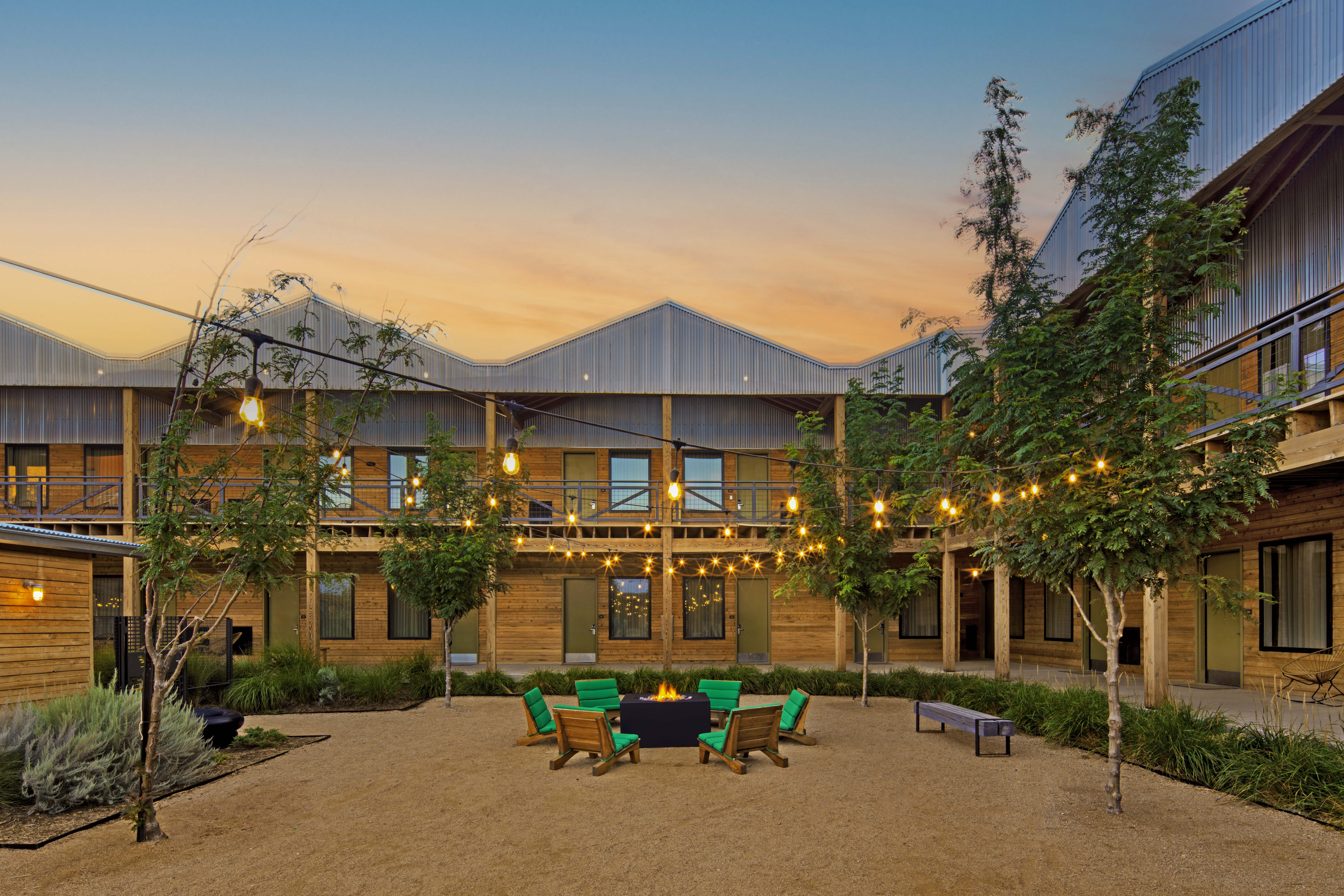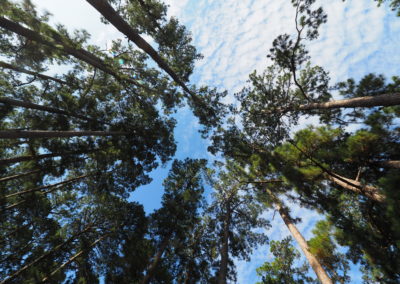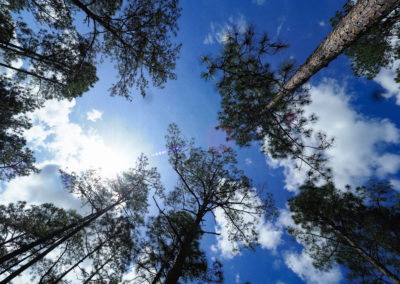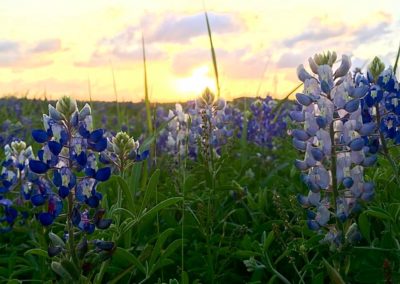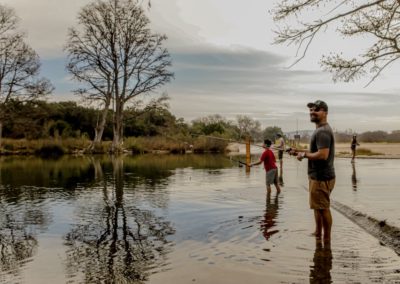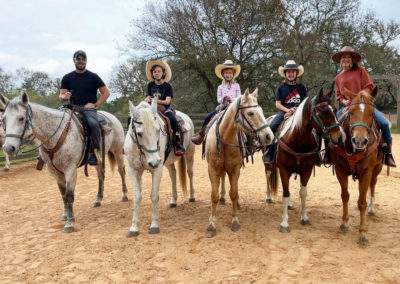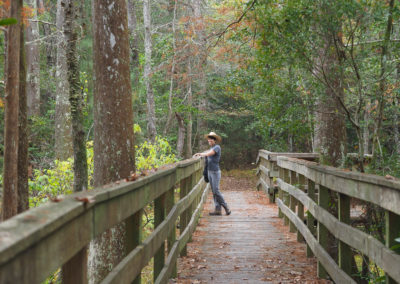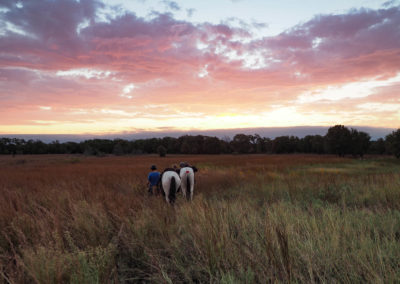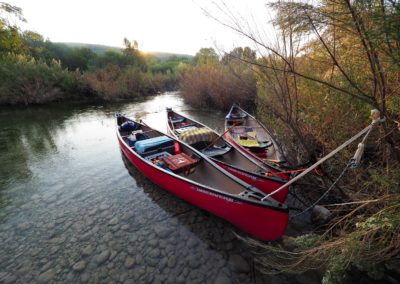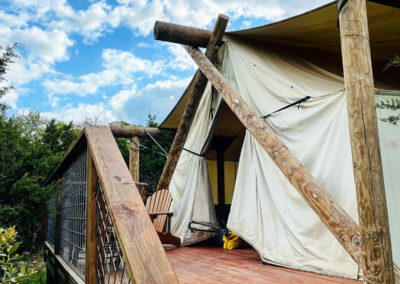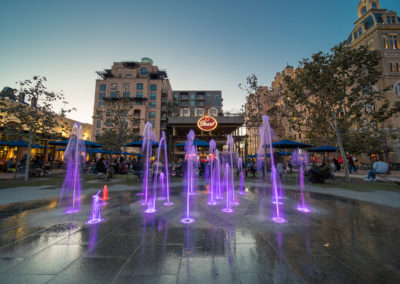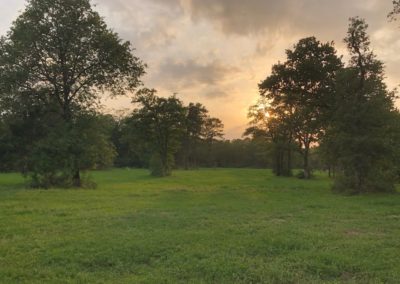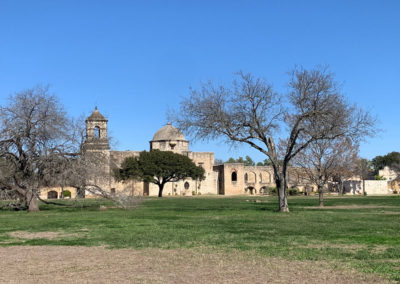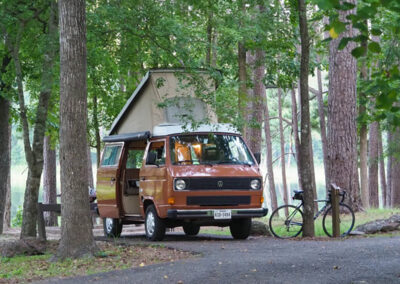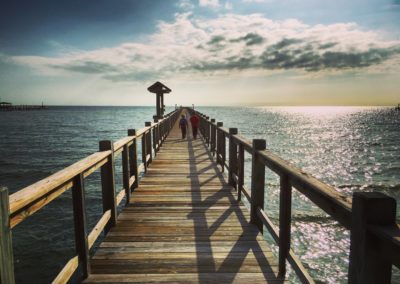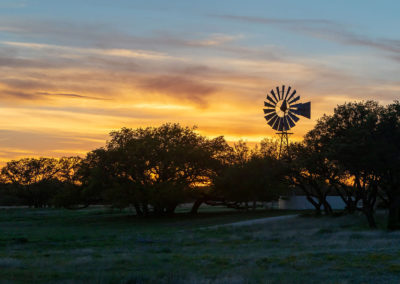The bluebonnets are back, and they arrived early this year.
Before the first official day of spring, Texas bluebonnets and wildflowers began making their annual debut, painting winter’s muted landscape with a rainbow of color, perfuming the air with the season’s signature scents and blanketing roadsides in brilliant bursts of blue.

Bluebonnets are popping up at the Lady Bird Johnson Wildflower Center. Courtesy of the Wildflower Center
With wildflower season on the brink of bursting into full bloom, now is the time to buckle up and embark on a floral-fringed road trip. If you’re wondering where to find Texas bluebonnets and wildflowers this year, Austin Travels has 10 suggestions for soaking in the sights of spring.
- Wander through wildflowers at Lady Bird Johnson Wildflower Center
Lady Bird Johnson Wildflower Center, home to nearly 900 species of native Texas plants including hundreds of species of wildflowers, is one of the best, most enjoyable and safest bets for becoming beguiled by spring blooms. Wildflower Center experts are expecting an especially lush and lovely season for bluebonnets and other wildflowers this year.
“I think it’s going to be an above average wildflower season,” says Andrea DeLong-Amaya, the Lady Bird Johnson Wildflower Center’s director of horticulture.
Unlike last year, when cooler weather delayed the blooms a bit, this year’s wildflowers are getting a head start due to the warmer-than-average weather, says DeLong-Amaya.
“It’s been a little bit warmer than average, so the bluebonnets are getting started a couple of weeks earlier than normal,” she says. “We had good rains paced out throughout the fall and winter months, which kept the plants going in the spring. Blooms are linked to the temperatures, so between these sunny and warmer weather days, it has pushed them to go into bloom earlier.”
In addition to highly anticipated showstoppers like Texas bluebonnets, Indian paintbrush and pink evening primrose, the Wildflower Center has a whole slew of diverse wildflowers on view. When wandering through the Wildflower Center, be on the lookout for species typically found on the sidelines such as antelope horns milkweed, dewberry, irises, golden groundsel, windflowers, goldeneye phlox, spiderworts, prairie fleabane, baby blue-eyes, agarita, salvias, purple coneflowers and more. Flowering trees like mountain laurels, Mexican plums, redbuds, and red buckeye are also blooming right now.
Even the drought much of Texas experienced last summer actually proved beneficial for the blooms because it reduced wildflower competitors like grasses, making space for the spring blooming plants, says DeLong-Amaya. But don’t delay your wildflower watching plans this spring –– early blooms mean an earlier peak.
“Since bluebonnets are already starting, they will probably be peaking the second half of March when it’s typically not until early April in Central Texas,” says DeLong-Amaya.
Find wildflower facts, recommended drives and bloom updates at Texas Wildflower Center, and participate in this year’s wildflower watch on Instagram @texaswildflowerwatch by tagging your photos #TxWildflowers2023.
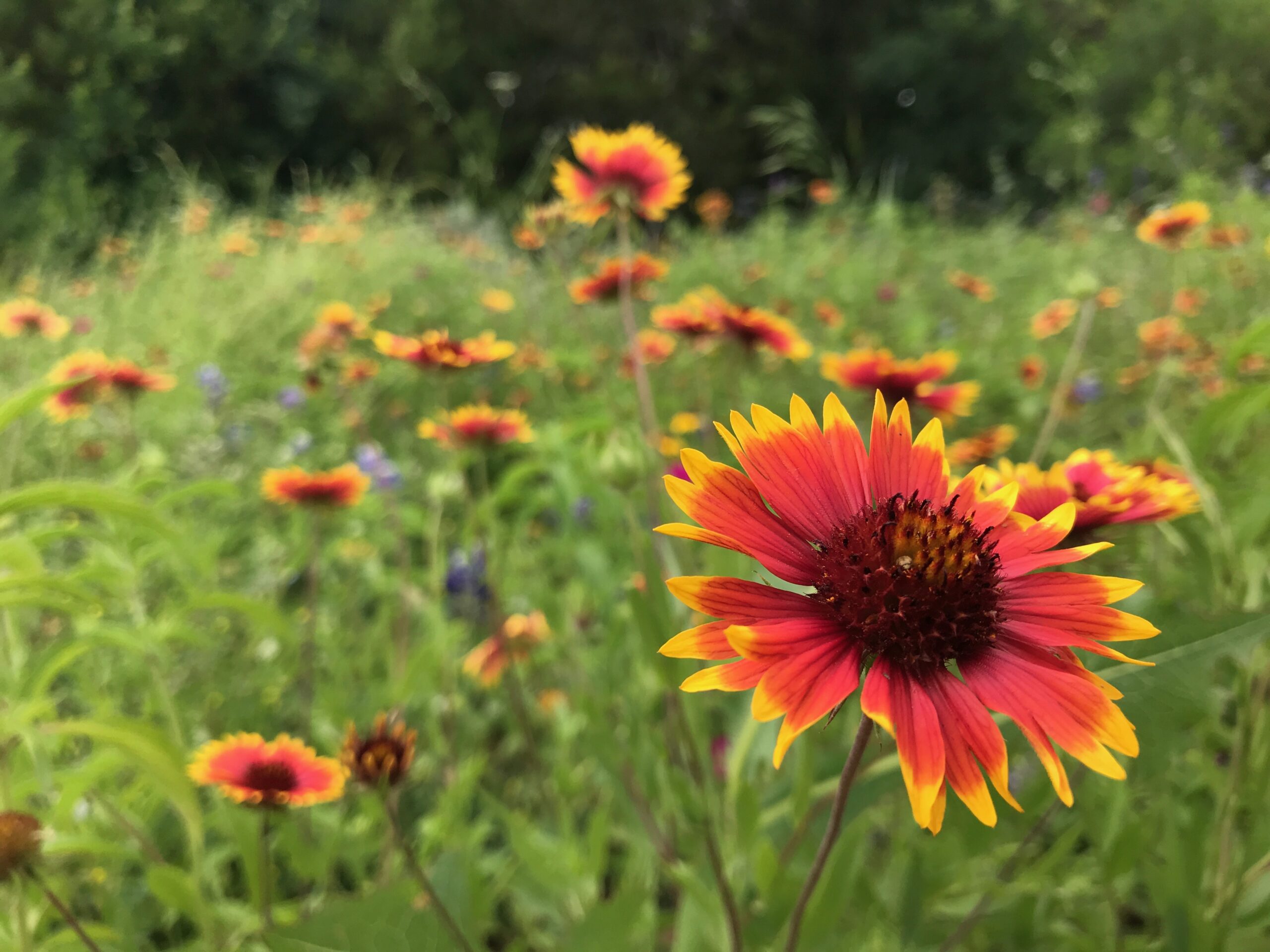
Vivid firewheels are a beautiful sight at the Lady Bird Johnson Wildflower Center each spring. Courtesy of the Wildflower Center.
- Trek to a Texas State Park for bluebonnets
Look past busy roadsides and toward the plethora of state parks found throughout Texas which offer some of the best (and safest) backdrops in the state for beholding the blooms and snapping wildflower photos with your whole crew. Nearby state parks consistently teeming with wildflowers include Pedernales Falls State Park, Lyndon B. Johnson State Park and Historic Site and McKinney Falls State Park, among others. Because spring tends to be a popular time to visit, make day pass reservations before you go to avoid being turned away when parks fill up with visitors.
RELATED: 8 great state parks for camping with kids

Washington County boasts big swathes of blue. Photo by Natalie Lacy Lange
- Book it to Bluebonnet Country
Cruise along Washington County’s 80 miles of flowering farm roads winding through Brenham, Burton, Independence, Washington, and Chappell Hill to experience the bold bursts of blue that gave the area its name as “Bluebonnet Country.” Spring is the most picturesque time of the year to hit Washington County’s Bluebonnet Trail, and the bloom-prone area is on track for another beautiful wildflower season.
“The bluebonnets are already out –– early this year for us,” says Lu Hollander, Tourism & Marketing Specialist with Visit Brenham DMO, who says there are already spectacular showings along 290 East and west of Brenham as well as the land behind Brenham’s Walmart shopping area, which offers a safe spot for parking and posing for pictures.
But don’t delay your Bluebonnet Country road trip –– local experts are predicting the bluebonnet season will wane before April this year. Keep up with what’s blooming in the area and check out wildflower drive maps at Visit Brenham’s Wildflower Watch website.
RELATED: Heading to Brenham? You’re in for a treat

Snap bluebonnet pictures of the kids in safe areas away from traffic like parks and preserves. Photo by Travis Albrecht
- Behold the blooms in your own backyard
You don’t have to travel far to soak in the stunning sights of spring. Austin’s parks and nature preserves offer some of the best places around town to safely view bluebonnets and wildflowers –– and there’s no better time to get outside than spring.
“The big news on the wildflower outlook this year is simply that it’s taking place much earlier this year,” says Cynthia D. Klemmer, Ph.D., an environmental conservation program manager for Austin Parks and Recreation Department. “Bluebonnets are up and blooming now, several weeks earlier than normal. I would encourage people to look for sunny, open fields that are not heavily turfed — meadows and open spaces — and encourage them to explore a park or preserve that they have not been to in the past.”
Pick from plenty of preserves that are part of the Austin Parks system to capture your wildflower photos, or set your sights on the parks boasting wide open fields such as Commons Ford Ranch Metropolitan Park, Bull Creek District Park or Emma Long Metropolitan Park, which is designated as a Monarch Watch Waystation.
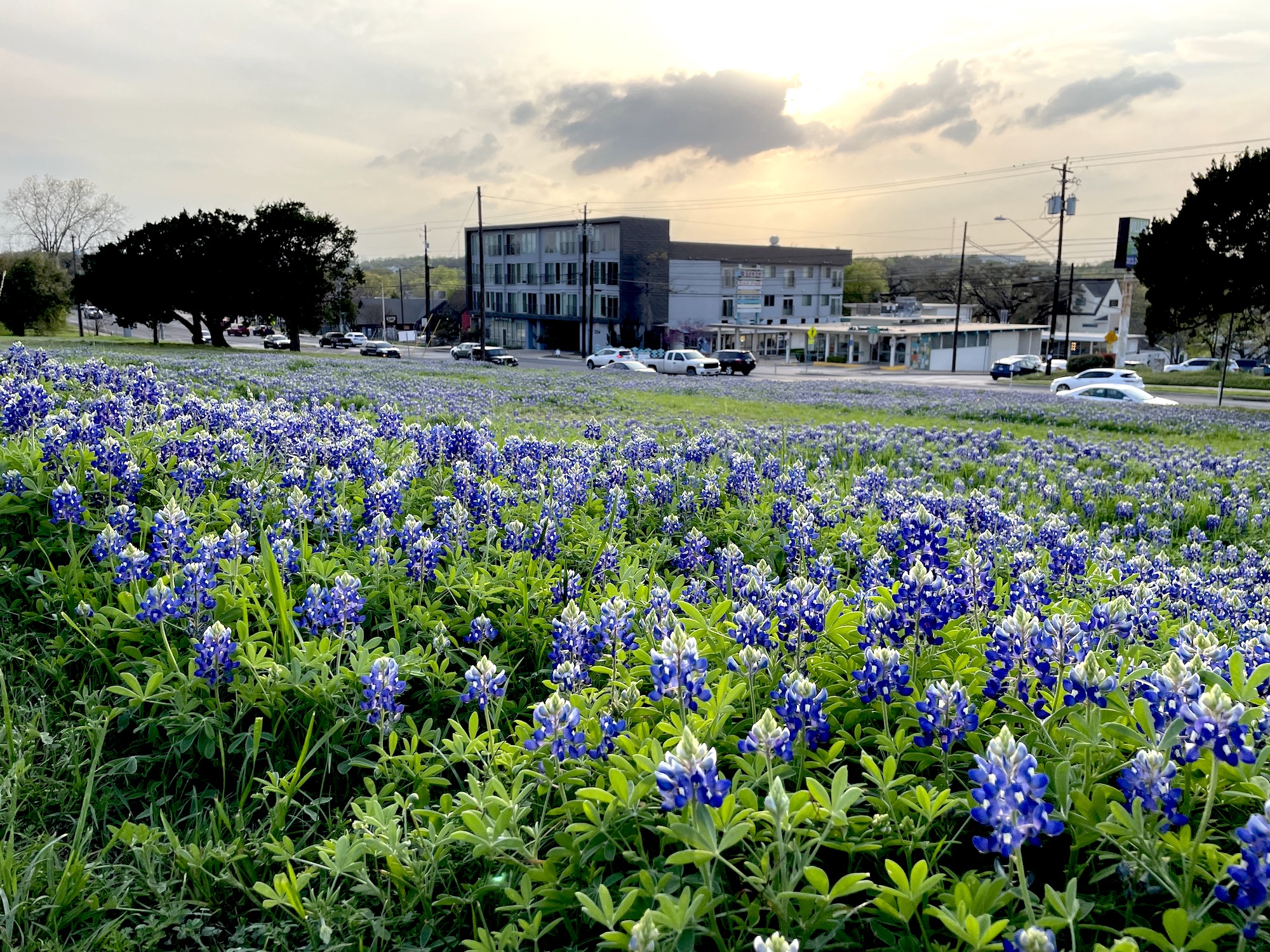
Bluebonnets are already showing off this year at St. Edward’s University. Photo by Travis Albrecht
- St. Edward’s University
Each spring, stunning swathes of blue grace the gorgeous 160-acre campus of St. Edward’s University just south of downtown. And while patches of beautiful bluebonnets are scattered throughout the picturesque campus, this year a banner display is unfolding all along St. Edward’s South Congress Avenue frontage.
- Willow City Loop
Take a floral-fringed drive along Willow City Loop, a 13-mile scenic drive boasting meadows and valleys cloaked in colorful blooms spanning bluebonnets and Indian paintbrush to firewheels and poppies. Make the drive during the weekdays to avoid weekend crowds, or better yet, bicycle along big swaths of blooms like our Pam LeBlanc likes to do.
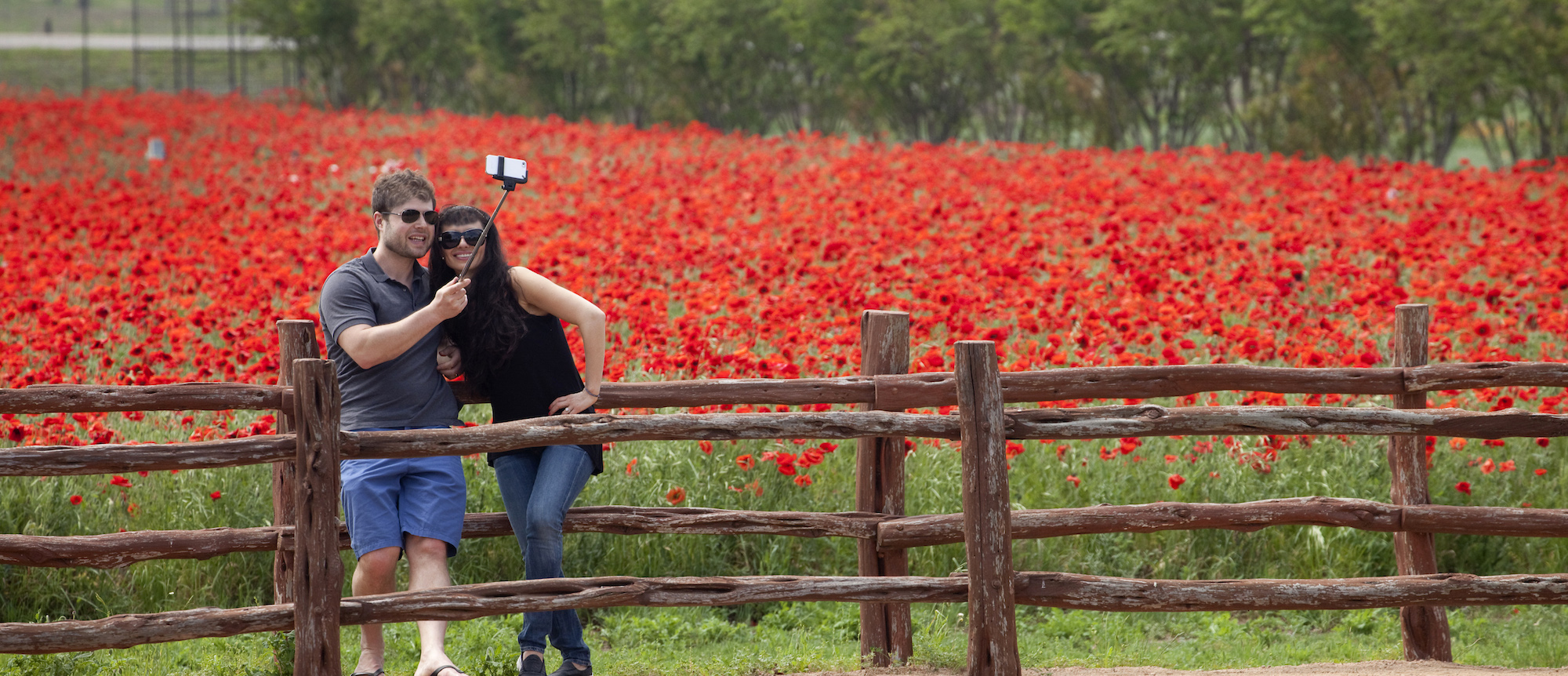
Snap your wildflower selfies in flowery Fredericksburg. Photo by Marc Bennett
- Find flowers in Fredericksburg
Make your first flower stop in Fredericksburg at Wildseed Farms –– the nation’s largest working wildflower farm brimming with hundreds of acres of flowering fields just outside of Fredericksburg.
“Spring is going to start early due to the warm weather in February,” says John Thomas, owner and founder of Wildseed Farms, who is predicting an above normal wildflower show starting mid-March and continuing through mid-May as long as the spring rains cooperate. “April is the best time to see color in the Hill Country.”
Bluebonnets are in heavy bud stage right now, and a variety of the farm’s wildflower fields including showstopping red poppies, coreopsis and Indian blankets, are on the brink of blooming next. Stick around the Hill Country to cruise along the winding roads meandering through Fredericksburg, Johnson City, Mason and Llano, where you will find the most time-tested Texas Hill Country trails bursting with bluebonnets, pink evening primroses, daisies, Indian paintbrush, vibrant winecups and more.

Behold the beautiful sites of spring along the country backroads. Photo by Natalie Lacy Lange
- Make a beeline to Burnet
Book it to Burnet, officially designated as the “Bluebonnet Capital of Texas” by the Texas State Legislature in 1981. Burnet, widely considered one of the best towns in Texas for viewing wildflowers, is known as a bluebonnet hotspot thanks to its surrounding roadsides and pastures painted in blue during the spring season. Time your trip with Burnet’s 40th Annual Bluebonnet Festival taking place April 7-9 this year.
- Make your way to Marble Falls
Marveling at the magnificent wildflowers is easy when you start your journey in Marble Falls, just an hour northwest of Austin, then continue on to the surrounding self-guided scenic floral-fringed drives. Known as the epicenter of wildflower country this time of year, you’ll find a colorful landscape peppered with everything from bluebonnets and winecups to yuccas and paintbrushes. Download a wildflower scenic route map at www.visitmarblefalls.org/wildflowers to embark on the floral journey of your choice –– the Bluebonnet Trail (35 miles), Texas Paintbrush Trail (50 miles), Prairie Verbena Trail (50 miles), Winecup Trail (55 miles) and Yellow Coneflower Trail (80 miles) –– each of which starts in Marble Falls.
Did You Know

Five Fun Flower Facts:
- There are six species of bluebonnets in Texas.
- The Texas bluebonnet became the Texas state flower in 1901.
- The Indian paintbrush is actually a pretty parasite.
- You can eat some wildflowers, including pink evening primrose.
- Bluebonnets are part of the legume family.
Spot these 10 Spring Blooms:
5 common early-spring bloomers in Texas include:
- Bluebonnet
- Pink evening primrose
- Indian paintbrush
- Winecup
- Coreopsis
5 common late-spring bloomers in Texas include:
- Indian blanket
- Black-eyed Susan
- lantana
- Turk’s cap
- Horsemint













